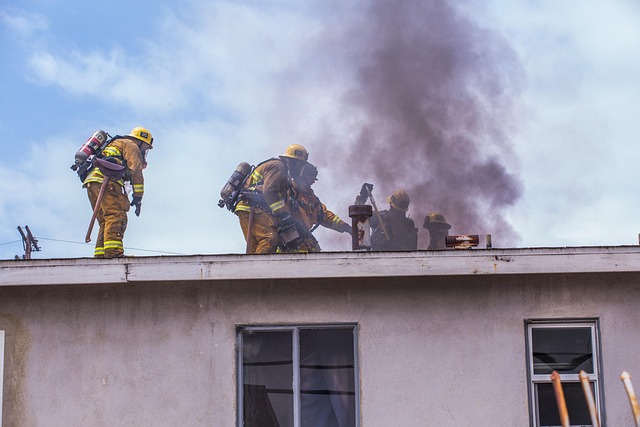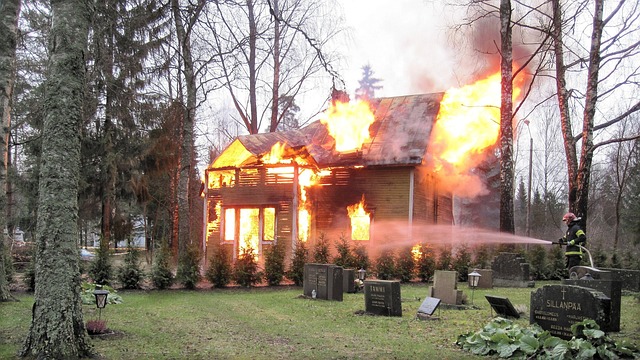Selling a fire-damaged property in California requires adhering to stringent housing regulations aimed at safety, sustainability, and fairness. This includes professional assessments for damage and code violations, transparent legal disclosures of known defects, compliance with the California Building Code, local permits, zoning laws, and fair housing practices. Homeowners must document pre-fire conditions, record renovations, stay updated on codes, and engage professionals to ensure a legally compliant and successful sale.
“California’s housing regulations form a complex yet critical framework for real estate transactions, especially when dealing with unique properties like fire-damaged homes. This comprehensive guide aims to demystify these regulations, offering insights into every step of the process.
From understanding building codes and permits to navigating legal requirements when selling a fire-damaged house in California, this article is your go-to resource. Discover best practices for compliant sales, ensuring you’re prepared to navigate the state’s unique housing market.”
- Understanding California's Housing Regulations: A Comprehensive Overview
- Selling Fire-Damaged Properties: Legal Requirements and Disclosures
- Building Codes and Safety Standards for Homeowners
- Permits and Zoning: Navigating Local Laws for Real Estate Transactions
- Common Challenges and Best Practices for Compliant Home Sales in California
Understanding California's Housing Regulations: A Comprehensive Overview

California’s housing regulations are a complex web designed to ensure safety, sustainability, and fairness in the real estate market. These rules cover a wide range of aspects, from construction standards and zoning laws to fair housing practices and energy efficiency requirements. When considering selling a fire-damaged house in California, understanding these regulations is paramount. A thorough assessment by professionals is often necessary to identify any structural damage, environmental hazards, or code violations that might affect the property’s value and saleability.
The state’s Department of Building Standards and Fire Safety plays a crucial role in enforcing these regulations. They provide guidelines for repairs, rebuilding, and renovation, ensuring that any selling party adheres to safety standards. Additionally, California’s fair housing laws protect potential buyers from discrimination based on race, religion, gender, or other protected characteristics. Sellers must be aware of these laws and ensure their marketing and sales practices comply, as non-compliance can lead to legal issues and financial penalties.
Selling Fire-Damaged Properties: Legal Requirements and Disclosures

Selling a fire-damaged property in California involves adhering to specific legal requirements and disclosure obligations. If a home has sustained damage from a fire, potential buyers have a right to know about the extent of that damage before purchasing. The California Civil Code requires sellers to disclose any known material defects, including those caused by fire, that could negatively impact a property’s habitability or value. This includes providing details about the fire’s origin and extent, as well as any repairs made or planned.
Failing to accurately disclose fire damage can lead to legal repercussions for sellers. It’s crucial to obtain a thorough inspection of the property before listing it for sale to ensure all damaged areas are identified and properly addressed. Sellers should also be prepared to provide potential buyers with relevant documentation, such as repair estimates or reports from firefighters, to support any disclosures made during the sales process. Transparency throughout the transaction is key to ensuring a smooth and legally compliant sale of a fire-damaged property in California.
Building Codes and Safety Standards for Homeowners

In California, strict building codes and safety standards are in place to protect homeowners and ensure the structural integrity of properties. These regulations cover various aspects, including construction materials, electrical systems, plumbing, and fire safety measures. When it comes to selling a fire-damaged house in California, adhering to these standards is essential. Homeowners must conduct thorough inspections and repairs to meet the required safety criteria before putting their property on the market.
The California Building Code outlines specific guidelines for rebuilding or remodeling after a fire. This includes replacing damaged structural elements, updating electrical wiring to prevent overloading, and installing modern fire suppression systems. Additionally, homeowners should ensure that any renovations comply with local zoning laws and building permits are acquired to avoid legal issues. Selling a fire-damaged house in California requires transparency about the property’s history and the steps taken to restore it to safe living conditions.
Permits and Zoning: Navigating Local Laws for Real Estate Transactions

When considering selling a fire-damaged house in California, understanding local permits and zoning regulations is crucial for a smooth transaction. Each city or county has its own set of rules regarding rebuilding, renovation, and resale after a structural damage event like a fire. Before listing your property, it’s essential to obtain the necessary permits to ensure compliance with these laws.
Navigating these local laws can be complex, as zoning regulations dictate how and where construction or alterations can take place. For instance, certain areas may have restrictions on rebuilding height, design, or materials used, especially in historic districts. Consulting with a real estate professional or a building inspector familiar with your region is recommended to help you understand the permits required for selling a fire-damaged house in California and avoid any legal complications down the line.
Common Challenges and Best Practices for Compliant Home Sales in California

Selling a fire-damaged home in California comes with unique challenges due to the state’s stringent housing regulations. One of the primary hurdles is navigating the building and safety codes, which can be complex and stringent, especially for older properties. Homeowners must address any damage caused by the fire and ensure the property meets current safety standards set by local authorities. This process often involves costly repairs and may delay the sale.
Best practices for compliant home sales include thorough documentation of pre-fire condition, meticulous record-keeping during renovation, and staying updated on relevant building codes. Engaging with experienced professionals such as inspectors, contractors, and legal experts can help streamline the process and ensure adherence to regulations. Additionally, being transparent about fire damage history and repairs in property listings can attract discerning buyers who understand the significance of safety standards, facilitating a smoother sale.
California’s housing regulations, encompassing building codes, safety standards, permits, and zoning laws, ensure the protection of residents and property values. When selling a fire-damaged house in California, understanding these regulations is paramount. This comprehensive guide has navigated through key aspects, from legal disclosures to best practices, empowering homeowners and real estate professionals to navigate the process compliantly. For those looking to sell fire-damaged properties in this diverse state, adhering to these guidelines is essential for a smooth and successful transaction.






